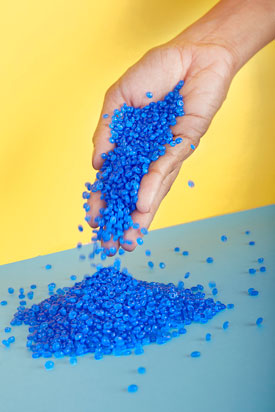Food and Drug Administration (FDA)
Under the code of Federal Regulations, the US Food and Drug Administration provides detailed specifications regarding the requirements for acceptance of various polymers and compounds for intended use in food applications. When a product is classified as an "FDA grade" material, it designates that only 21 CFR, approved materials are used in its formulation.
R E A C H Compliance.
The National Sanitation Foundation is known for the development of standards, product testing and certification services in the areas of public health safety and protection of the environment. NSF certification programs are accredited by the American National Standards Institute (ANSI/RAB), The Dutch Council for Accreditation (RvA) and the Standards Council of Canada (SCC).
Testing alliances allow for NSF testing acceptance in other regions of the world as well. Some of the alliances include Intertek Testing Services (ITS), KIWA N.V. in The Netherlands, Canadian Standards Association (CSA) and QMI in Canada, and the Japan Gas Appliance Inspection Association (JIA) in Japan, to name a few.
Typical applications requiring NSF certification are potable water applications, water treatment systems, restaurant services and plumbing.
D M F ( Drug Master File )
USP specifications cover blood and body fluid compatibility/contact applications. USP tests are designed to provide information on biological effects of polymer materials used in containers. There are six classes into which a polymer may be placed, depending on its performance in specific USP biological tests. Each increasing class number, from I to IV, requires that a polymer be subjected to additional tests, with each level using more extraction vehicles than the previous class. There is also a range of increasingly higher extraction temperatures which may be selected to further characterize the material.
Underwriters Laboratories (UL)
Underwriters Laboratories is an independent, not-for-profit product safety and testing certification organization based in the US. Common tests are UL-94 (vertical and horizontal burn test further categorized under HB, V0, V1, or V2), VTM (thin film burn test) and VW (vertical wire burn test). Typical applications covered by UL specifications include hand-held electronics, business machines and appliances.
A S T M .
In our country , all the polymer test mainly comes under ASTM , following all the specifications of Test Specimen along with Test Report.
For cable applications requiring military specs include umbilical cables, field-use flexible cords, underground cable and ship-to-shore cable.
Canadian Standards Association (CSA)
CSA is the principle Canadian standards body that sets performance criteria and test methods in certain applications. This is a body similar to that of ASTM, UL, DOT, FDA and MIL in the United States.







